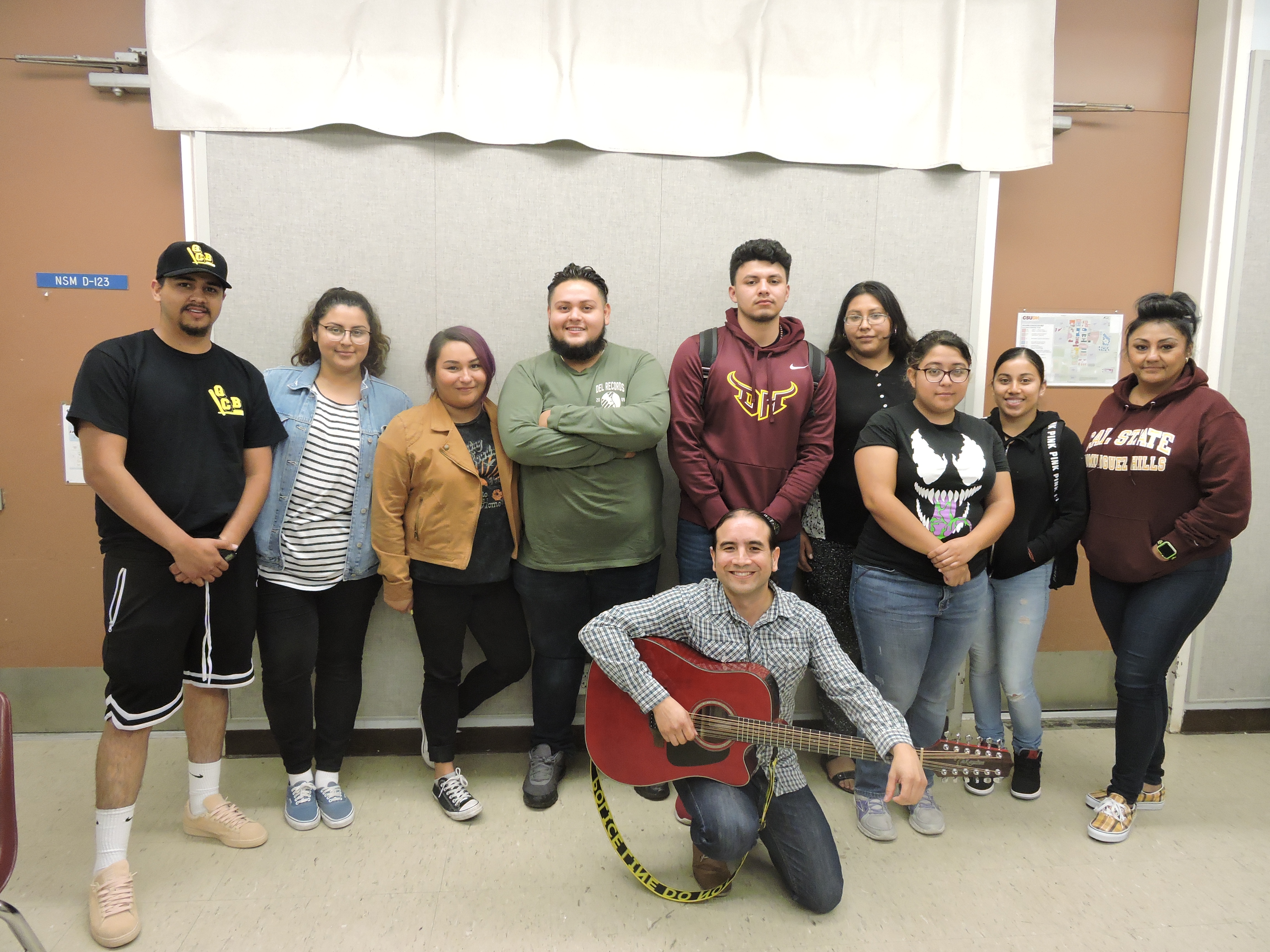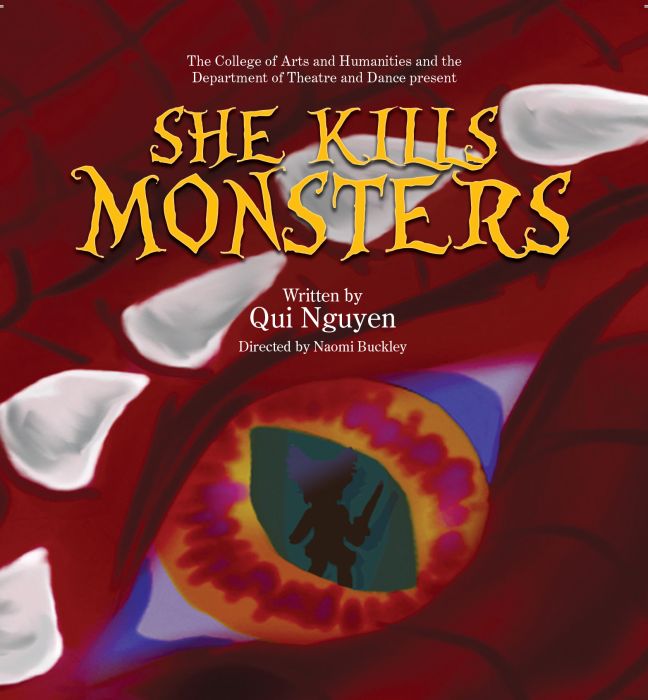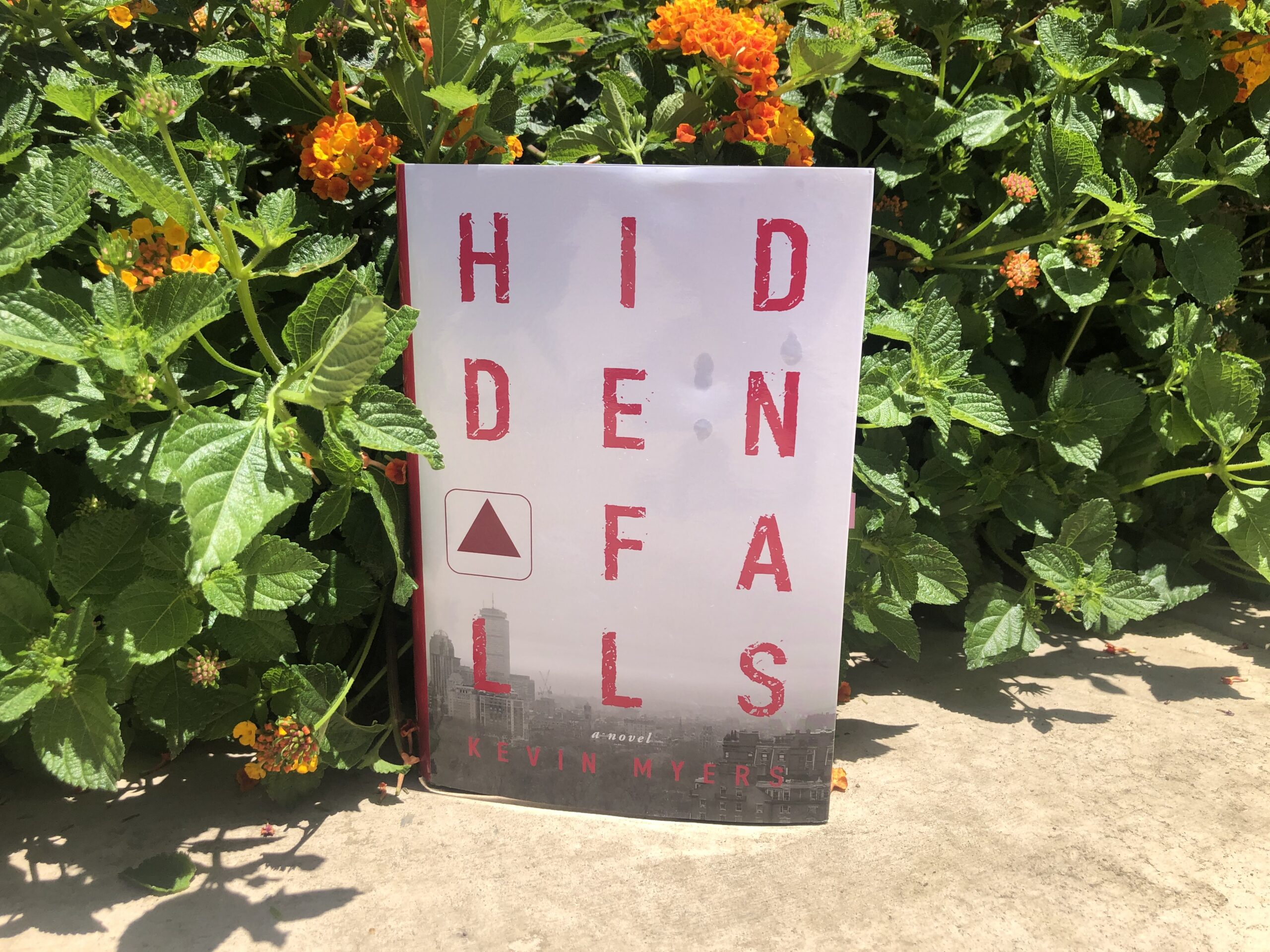By: Destiny Torres
Staff Reporter
Alexandro Hernández grew up in the small Texas town of Del Río, just across the border from the Mexican city of Ciudad Acuña, Coahuila. But what drove him to become a musician wasn’t the traditional border town
But as an undergraduate at the University of Texas in San Antonio, he began learning more about the traditional Mexican music he had always heard, but never seriously studied.
One of those forms was the corrido, a type of Spanish-language ballad that merges folk music and oral history and has been used for decades in Mexico and other Latin American countries, particularly El Salvador, as a way to narrate historical events and document the experiences of oppressed communities and individuals.
And now Hernández, a professor in the Chicano/a Studies Department, is teaching the history and evolution of the corrido to CSUDH students, as part of a new class offered this semester.
The class is CHS 495, Special Topic in Chicano/a Studies, which meets on Tuesday and Thursdays. It is both a history class as well as a participatory class, in that students get to write their own corridos.
In the class, which Hernández said is in part derived from the studies of Américo Paredes, one of the first people to receive a doctorate in Chicano Studies, students learn about the history of corridos, which are related to Spanish epic ballads, romances. They began in the Mexican War of Independence from Spain, and reached their peak 100 years later with the Mexican Revolution. In the 1970s, corridos had a renaissance, but now they were associated with the narcos lifestyle, or drug dealers, than their more grassroots origins
In the class, students learn about the history of corridos, which began in the Mexican War of Independence from Spain in the early 1800s, flourished during the Mexican Revolution a century later, and now 100 years after that, are still around but are mistakenly associated more with the narcos lifestyle, or drug dealers, than their more grassroots origins.
That is a version of the form that Hernández wants to dispel with his class. When he first asked his class what they thought corridos were, Hernández, who also writes and performs music as well as teaching it, said most replied that they were about narcos. Hernández tried to set them straight.
“It’s a much later manifestation of the corrido,” Hernández said. “That’s the difference between the commercialization of the corrido versus almost 200 years before.”
One reason corridos are so often identified with narcos, Hernández said, is that often the Mexican media glamorizes the lifestyle the same way a large number of U.S. hip hop tracks glamorize drug dealing.
Another misconception he deals with is the feeling that corridos are solely strong expressions of Mexican identity. They are also a major part of Central American identities as well, he said. “We mostly see corridos as a nationalistic expression or expression of resistance for Mexicans, but it’s beyond that,” Hernández said. “It’s beyond borders.”
Another misconception of corridos is that what makes a song a corrido is a beat. One of the things Hernández points out is that a corrido is not a musical style, it is a format. It’s a way of telling a story.
As a way of showing that, Hernández made a Spotify playlist of corridos to listen to. Along with those songs, and what they learn in class, students then write their own corridos, both individually and with a group, relating their corrido to the research and history they’ve gone over in class.
Bryan Cantero, a senior Chicano/a studies major, took the class in large part because he was interested in seeing if his idea of the corrido would be challenged.
“I grew up with this music, but I would always hear it be demonized or considered to be evil,” Cantero said. “Inevitably, I think I internalized some of that,”
Cantero said that it felt good to see himself in the material being taught at a university level.
“It forces academic institutions to acknowledge some of the knowledge some of us bring from home,” Cantero said.


